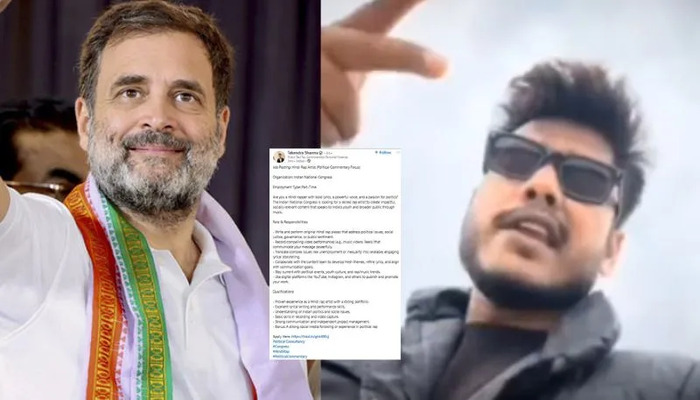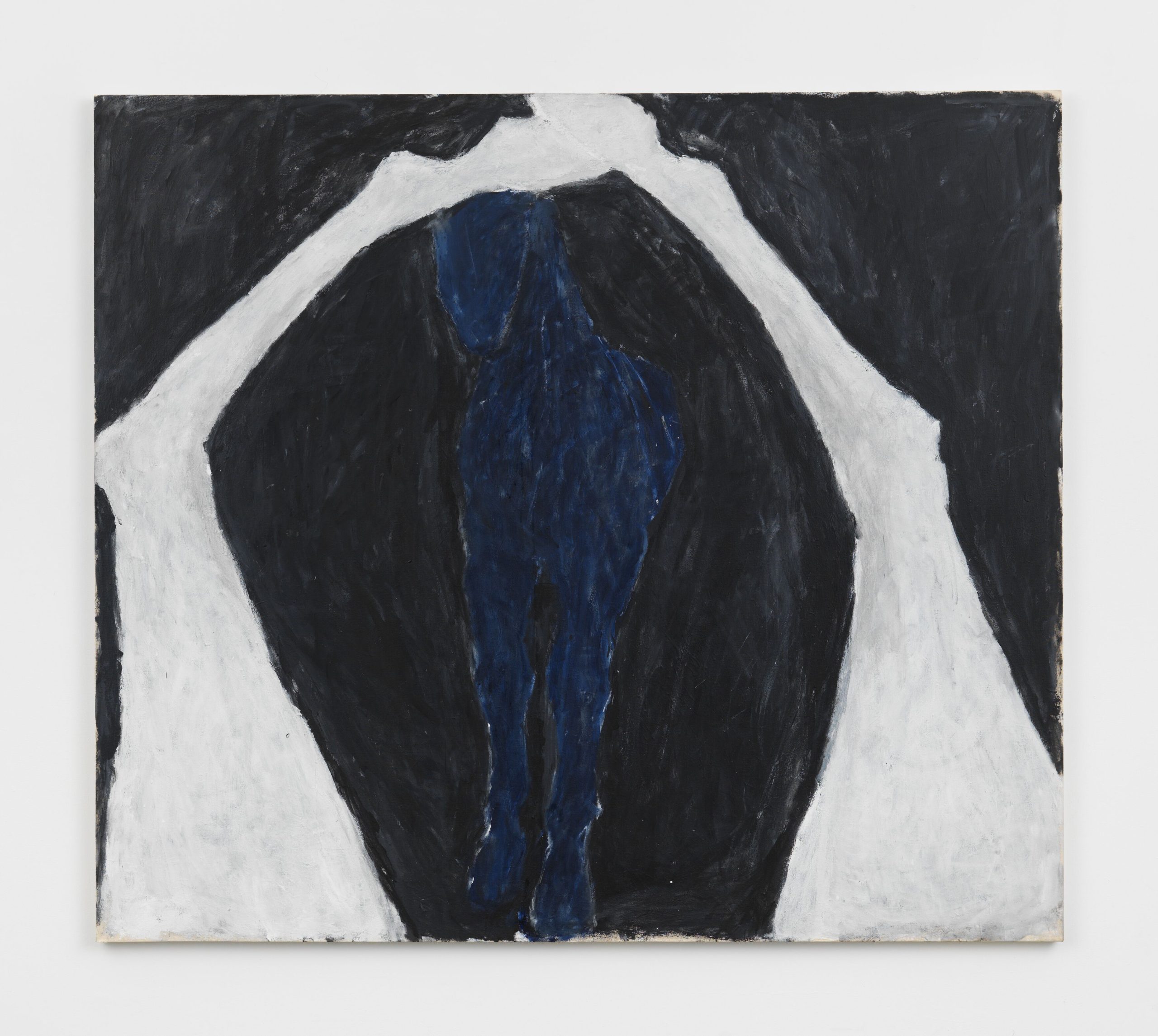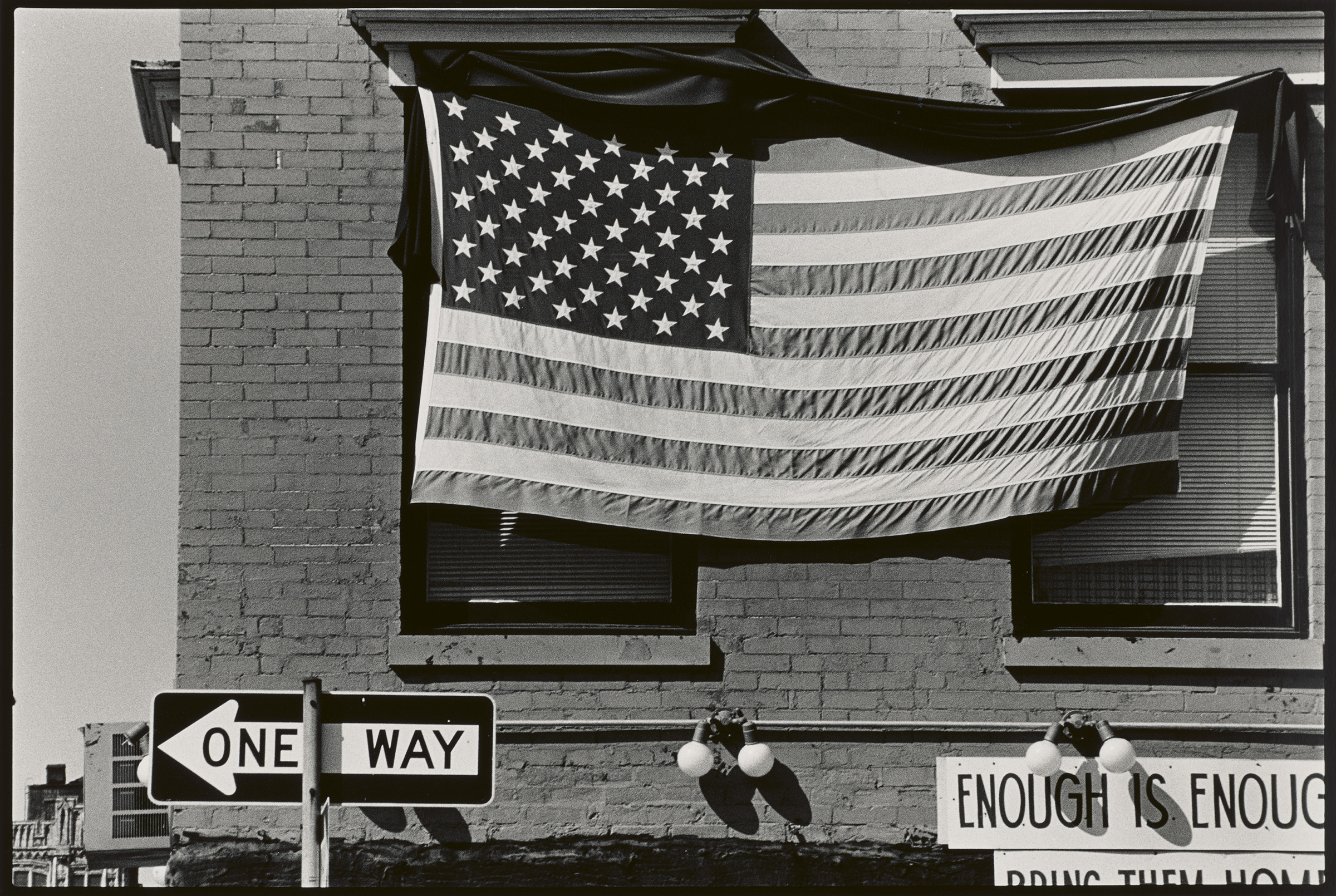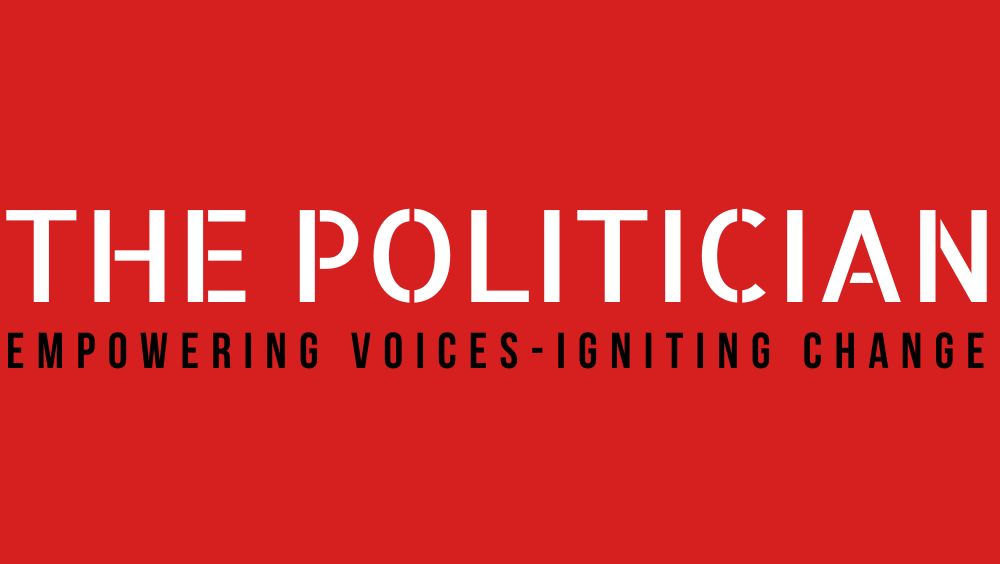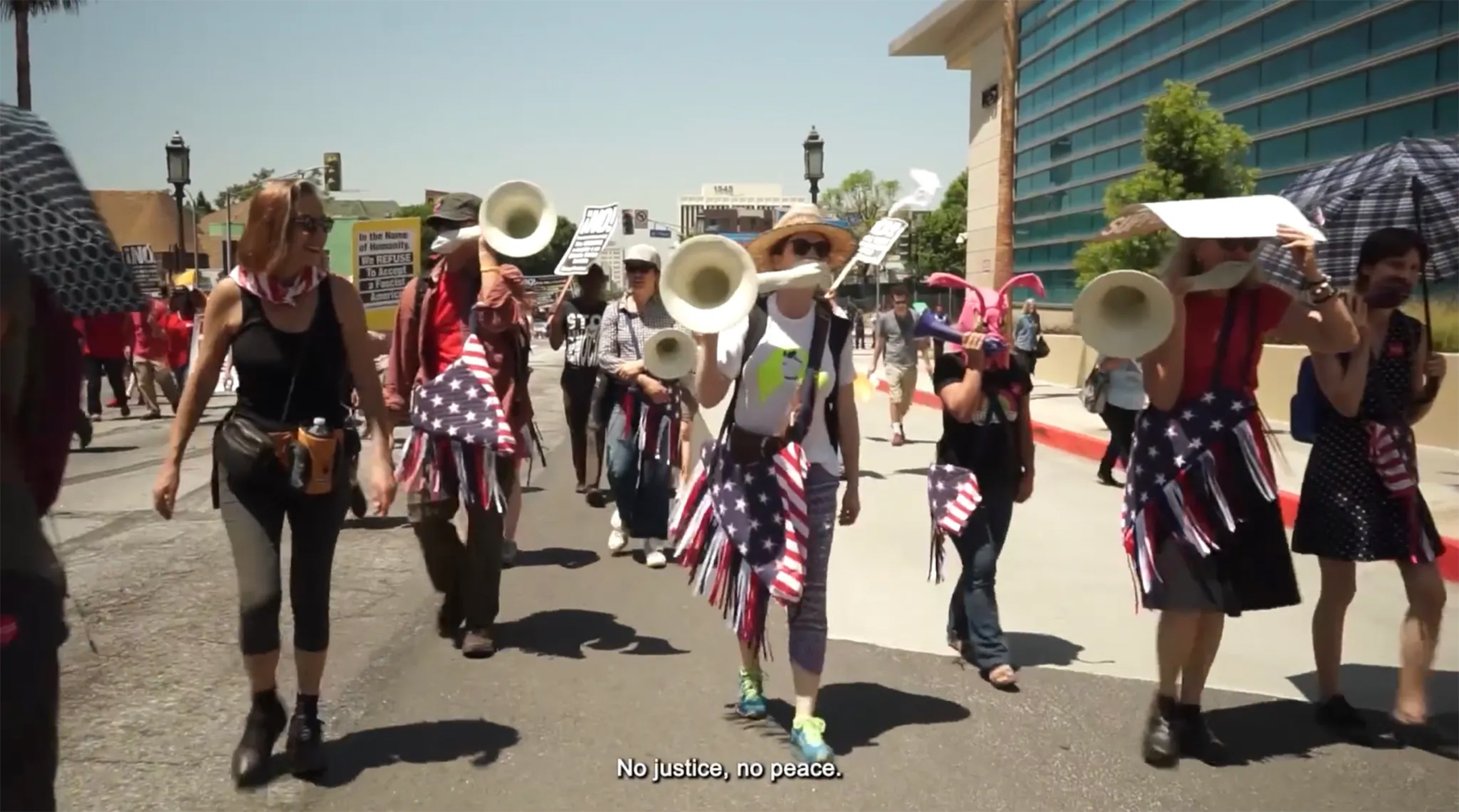India wins 2030 Commonwealth Games bid: A look back at the 2010 corruption scandal under UPA govt that shook the nation
On 15th October, Union Home Minister Amit Shah announced that India will host the Commonwealth Games (CWG) in 2030. India will host the multi sport global stage 20 years after the scandal tainted 2010 Games. The Commonwealth Sport executive board has recommended Ahmedabad as the host city for the centenary edition of 2030. Abuja, the capital of Nigeria, was another proposed city to host the Games; however, Ahmedabad became the final choice. A day of immense joy and pride for India.Heartiest congratulations to every citizen of India on Commonwealth Association's approval of India's bid to host the Commonwealth Games 2030 in Ahmedabad. It is a grand endorsement of PM Shri @narendramodi Ji's relentless efforts to…— Amit Shah (@AmitShah) October 15, 2025 Formal approval is expected at the Commonwealth Games Federation’s General Assembly in Glasgow on 26th November 2025. This development is expected to become a stepping stone towards India’s ambition of hosting the 2036 Olympics, and the Central Government has touted it as a “day of immense joy and pride”. In a statement, Amit Shah hailed the decision and credited Prime Minister Narendra Modi’s focus on sports infrastructure and talent development for making India “a marvel of sports destination”. President of the Indian Olympic Association, P. T. Usha, said in a statement that the Games will showcase India’s event capabilities and inspire youth. She called it a meaningful step towards the nation’s vision of Viksit Bharat 2047. India last hosted the CWG in 2010 in Delhi, which was overshadowed by poor planning, construction delays, and serious allegations of corruption. The memory of that scandal looms large as India prepares for 2030. The stakes have been raised high for India as the Central Government has to prove that it has learned from the past and can deliver a transparent and efficient Games on time and on budget. The shadow of 2010 – How the Commonwealth Games scam unfolded When India won the bid for the 2010 Commonwealth Games in New Delhi, it was seen as a moment of national pride. However, it became a synonym for mismanagement and corruption. Here is the timeline of key events from the 2010 CWG saga that still casts a shadow over India’s sporting reputation. It all began in November 2003, when India won the bid to host the 2010 Commonwealth Games. Canada was the top contender. India’s IOA had estimated the total cost of hosting the event at just Rs 1,200 crore. It was later criticised as “stunning in its short sightedness”. Soon, it was clear that the estimated budget was grossly unrealistic, and the final costs ballooned manyfold. There was also an allegation that India effectively bought support by giving a grant of 100,000 dollars to every Commonwealth nation’s Olympic committee as part of the bid. The “gesture” was later described by former sports Minister Mani Shankar Aiyer as akin to a “bribe”. In December 2004, then Congress MP Suresh Kalmadi was appointed as Chairman of the CWG Organising Committee on the recommendation of the Prime Minister’s Office, despite objections from the then Sports Minister, the late Sunil Dutt. Kalmadi, by becoming the Chairman of the CWG, gained control over Games preparations. Later, the auditors flagged it as an early mistake. Between 2006 and 2009, construction of stadiums and city infrastructure proceeded at a snail’s pace. The budget for the Games spiralled upwards in multiple revisions. Between April 2007 and September 2010, the official cost estimates were revised seven times. What was touted to be just Rs 1,100 crore soared from Rs 3,566 crore to Rs 11,687 crore, ten times the initial estimate. But this was not the end. By the time the Games happened, the total spending by various agencies soared to around Rs 18,532 crore, over fifteen times the original bid estimate. Warning signs had emerged as the schedule of the Games came closer. In late 2009, Commonwealth Games Federation President Michael Fennell publicly warned that preparations were behind schedule and “time is your enemy” for the Delhi organiser. The CGF set up a special review panel to monitor progress monthly as a sense of urgency grew. Then Sports Minister of India, MS Gill, assured that the government would pour in more funds as needed to ensure success. His assurance reflected how cost control had effectively been lost. In July 2010, internal criticism from former Sports Minister and Congress leader Mani Shankar Aiyar came as he lambasted the Games expenditure. He claimed that Rs 35,000 crore was being spent on a “circus” while basic sports needs for India’s poor went unmet. He provocatively said he would be “unhappy” if the Games were successful, as it would encourage more such extravagance. He even levelled allegations that India “bribed” other Commonwealth nations, as mentioned above, to win the hosting rights. Kalmadi retorted by calling his remarks “irresponsible” and “anti national”. In September



On 15th October, Union Home Minister Amit Shah announced that India will host the Commonwealth Games (CWG) in 2030. India will host the multi sport global stage 20 years after the scandal tainted 2010 Games. The Commonwealth Sport executive board has recommended Ahmedabad as the host city for the centenary edition of 2030. Abuja, the capital of Nigeria, was another proposed city to host the Games; however, Ahmedabad became the final choice.
A day of immense joy and pride for India.
— Amit Shah (@AmitShah) October 15, 2025
Heartiest congratulations to every citizen of India on Commonwealth Association's approval of India's bid to host the Commonwealth Games 2030 in Ahmedabad. It is a grand endorsement of PM Shri @narendramodi Ji's relentless efforts to…
Formal approval is expected at the Commonwealth Games Federation’s General Assembly in Glasgow on 26th November 2025. This development is expected to become a stepping stone towards India’s ambition of hosting the 2036 Olympics, and the Central Government has touted it as a “day of immense joy and pride”.
In a statement, Amit Shah hailed the decision and credited Prime Minister Narendra Modi’s focus on sports infrastructure and talent development for making India “a marvel of sports destination”. President of the Indian Olympic Association, P. T. Usha, said in a statement that the Games will showcase India’s event capabilities and inspire youth. She called it a meaningful step towards the nation’s vision of Viksit Bharat 2047.
India last hosted the CWG in 2010 in Delhi, which was overshadowed by poor planning, construction delays, and serious allegations of corruption. The memory of that scandal looms large as India prepares for 2030. The stakes have been raised high for India as the Central Government has to prove that it has learned from the past and can deliver a transparent and efficient Games on time and on budget.
The shadow of 2010 – How the Commonwealth Games scam unfolded
When India won the bid for the 2010 Commonwealth Games in New Delhi, it was seen as a moment of national pride. However, it became a synonym for mismanagement and corruption. Here is the timeline of key events from the 2010 CWG saga that still casts a shadow over India’s sporting reputation.
It all began in November 2003, when India won the bid to host the 2010 Commonwealth Games. Canada was the top contender. India’s IOA had estimated the total cost of hosting the event at just Rs 1,200 crore. It was later criticised as “stunning in its short sightedness”. Soon, it was clear that the estimated budget was grossly unrealistic, and the final costs ballooned manyfold. There was also an allegation that India effectively bought support by giving a grant of 100,000 dollars to every Commonwealth nation’s Olympic committee as part of the bid. The “gesture” was later described by former sports Minister Mani Shankar Aiyer as akin to a “bribe”.
In December 2004, then Congress MP Suresh Kalmadi was appointed as Chairman of the CWG Organising Committee on the recommendation of the Prime Minister’s Office, despite objections from the then Sports Minister, the late Sunil Dutt. Kalmadi, by becoming the Chairman of the CWG, gained control over Games preparations. Later, the auditors flagged it as an early mistake.
Between 2006 and 2009, construction of stadiums and city infrastructure proceeded at a snail’s pace. The budget for the Games spiralled upwards in multiple revisions. Between April 2007 and September 2010, the official cost estimates were revised seven times. What was touted to be just Rs 1,100 crore soared from Rs 3,566 crore to Rs 11,687 crore, ten times the initial estimate. But this was not the end. By the time the Games happened, the total spending by various agencies soared to around Rs 18,532 crore, over fifteen times the original bid estimate.
Warning signs had emerged as the schedule of the Games came closer. In late 2009, Commonwealth Games Federation President Michael Fennell publicly warned that preparations were behind schedule and “time is your enemy” for the Delhi organiser. The CGF set up a special review panel to monitor progress monthly as a sense of urgency grew.
Then Sports Minister of India, MS Gill, assured that the government would pour in more funds as needed to ensure success. His assurance reflected how cost control had effectively been lost.
In July 2010, internal criticism from former Sports Minister and Congress leader Mani Shankar Aiyar came as he lambasted the Games expenditure. He claimed that Rs 35,000 crore was being spent on a “circus” while basic sports needs for India’s poor went unmet. He provocatively said he would be “unhappy” if the Games were successful, as it would encourage more such extravagance. He even levelled allegations that India “bribed” other Commonwealth nations, as mentioned above, to win the hosting rights. Kalmadi retorted by calling his remarks “irresponsible” and “anti national”.
In September 2010, last minute chaos mounted. As athletes were about to arrive, Delhi’s preparations descended into crisis. Twelve days before the opening, on 21st September 2010, a newly constructed 95 metre foot overbridge collapsed outside the main venue, which was Jawaharlal Nehru Stadium. Around 27 workers were injured, exposing the shoddy construction practices.
Bad construction was not the only problem. As the international teams checked in, they complained that the Athletes’ Village was filthy, incomplete and “unfit for human habitation”. Photos of waterlogged apartments and stray dogs in rooms made global headlines. Several countries’ delegation heads openly questioned if the Games should be held at all, as essential facilities were unfinished just days out. Commonwealth Games Scotland warned the situation was “unsafe” and asked the CGF to consider calling off the event if things did not improve.
In a rare move, the Indian Army was called to bail out the organisers. Army engineers built a temporary Bailey bridge in just four days to replace the collapsed footbridge, working round the clock to avert a security and logistical nightmare. Even then, Indian officials insisted everything would be fixed in time, dismissing the problems as largely “cosmetic”. Emergency clean up and repair efforts succeeded in patching up the venues just in time.
Between 3rd and 14th October 2010, the 19th Commonwealth Games took place in Delhi on schedule. Over 6,000 athletes from 71 nations participated. Once the events began, India managed to deliver a reasonably successful sporting competition. India finished second in the medals tally.
The relief was short lived. The spectacle could not wash away the stain of pre Games troubles. Allegations of large scale corruption and financial irregularities began to dominate the narrative as the closing ceremony confetti was still settling.
After the Games were over, then Prime Minister Manmohan Singh moved quickly and, on 25th October 2010, appointed a high level committee headed by former CAG VK Shunglu to investigate irregularities in the Games. This Shunglu Committee was tasked with examining the conduct of all agencies involved, from the Organising Committee to the Delhi government and central ministries, and to recommend action. At the same time, India’s anti corruption watchdog, the Central Vigilance Commission, and the Central Bureau of Investigation (CBI) also started probing specific complaints of fraud during the CWG preparations.
In 2011, the CBI filed its first chargesheet, naming Suresh Kalmadi as the “main accused” in a conspiracy to award an exorbitant contract for the Timing, Scoring, Result system to a Swiss firm. On 24th April 2011, Kalmadi was arrested on charges of cheating, conspiracy and corruption. Several of his close aides, including Secretary General Lalit Bhanot and Director General V. K. Verma of the OC, were also arrested and charged.
They were accused of colluding to award a Rs 141 crore timing equipment contract to Swiss Timing at an allegedly inflated cost of Rs 95 crore higher than market rates. In the same year, India’s Comptroller and Auditor General presented a scathing audit report in Parliament on 5th August 2011. The report detailed massive cost overruns and rules violations in Games projects.
The CAG flagged the Delhi government and multiple agencies for “ill conceived” projects, wasteful expenditures and severe irregularities. Political pressure mounted on those implicated. Kalmadi, meanwhile, remained in Delhi’s Tihar Jail for nine months as an undertrial until he was granted bail in January 2012.
Between 2012 and 2015, investigations continued and the Shunglu Committee submitted six reports, one after another. The reports uncovered irregularities in various areas. The findings indicted Delhi’s Lieutenant Governor Tejinder Khanna and Chief Minister Sheila Dikshit for overruns in city infrastructure and the Games Village project. The committee also slammed broadcasting deals overseen by national TV officials and recommended prosecuting then Prasar Bharati CEO B. S. Lalli for the broadcasting contract worth Rs 246 crore awarded to a UK firm.
By 2012, the CBI filed 19 FIRs on different aspects of the CWG scam. The FIRs ranged from venue construction to street lighting contracts. Trials slowly ground forward in special CBI courts. In 2014, a special court accepted a CBI closure report in one case related to an inflated contract for the swimming pool complex, citing lack of evidence of criminal conspiracy by officials. The cases dragged for years due to the sheer complexity of the investigations spread across dozens of tenders and projects.
In 2015, the first convictions came five years after the Games. In August 2015, a Delhi trial court convicted six people in a scam involving the upgrading of street lighting in Delhi for the Games. Four Municipal Corporation of Delhi engineers and two directors of a private company, M/s Sweka Powertech, were found guilty of manipulating tender documents to inflate prices, causing a Rs 3.3 crore loss to the government. Sentences ranged from four to six years in prison. The convicts appealed in the High Court and the sentences were suspended pending appeal. The cases are still ongoing in the Delhi High Court.
Between 2016 and 2017, the CBI quietly closed at least one high profile case against Kalmadi and others related to Rs 70 crore of contracts given to a London based consultancy, Event Knowledge Services, for Games planning and management. The investigators failed to find sufficient evidence of wrongdoing. In another case, a special CBI court in 2017 convicted two contractors for cheating in the award of contracts to renovate stadiums, Shivaji and Talkatora stadiums. They were sentenced to two and a half years in prison. That court acquitted the officials from the New Delhi Municipal Council who were accused of colluding in that contract, due to lack of proof of their involvement. Also in 2017, a separate trial over the CWG scoring equipment ended in all eleven accused, including Kalmadi and Bhanot, being acquitted by a Delhi court. The court ruled that the prosecutors had failed to prove the charges, a setback for the narrative of a “scam”.
From 2020 to 2025, cases wound up with few held accountable. The CWG related cases either ended in acquittals or remained stuck in procedural limbo. According to media reports, eleven of the nineteen CBI FIRs had been closed without any charges. Only two cases had led to convictions. Both of them were under appeal with no jail time served. The prosecution against Kalmadi and other OC officials for the Swiss Timing contract continues at snail pace through witness testimonies thirteen years later, with no verdict yet.
In April 2025, a Delhi court officially accepted the Enforcement Directorate’s closure report in the last pending case, which stated there was “no case” against Kalmadi, Bhanot or others under anti corruption laws. The judge noted that the CBI had already closed its related case due to lack of evidence and therefore no “proceeds of crime” could be proven for money laundering. With that, fifteen years after the fact, the legal saga ended with no top official held criminally liable for what was widely perceived as a massive scandal, showing the lapses in Indian investigation techniques and the judiciary.
Key players and the massive scale of corruption
At the centre of the 2010 Commonwealth Games corruption scandal was then Congress MP Suresh Kalmadi, as he had extensive control over Games related contracts and spending. Kalmadi was a veteran sports administrator and was joined by key aides, including Secretary General Lalit Bhanot and V. K. Verma, who served as the Director General. Other key officials were T. S. Darbari and M. Jayachandran, along with officials across Delhi’s civic and construction agencies.
The alleged financial misconduct was vast. According to media reports, the scam might have involved misappropriation or misuse of up to Rs 70,000 crore, which aligned with the total public expenditure on the Games, making it the costliest CWG in history. In contrast, the previous CWG in Australia in 2006 cost under Rs 7,000 crore. The CAG found that estimated costs inflated fifteen fold between 2003 and 2010, without a credible final assessment.
Cost overruns were rampant across sectors. The Connaught Place renovation ballooned from Rs 76 crore to Rs 671 crore. The street lighting project rose from Rs 13 crore to Rs 37 crore. “Beautification” works, according to the CAG, wasted Rs 101 crore.
Investigating agencies said that contracts were often awarded at inflated prices, favouring select firms. The Central Vigilance Commission flagged exaggerated rates even before the Games. Examples often cited in media reports included toilet paper rolls billed at Rs 4,000 and umbrellas at Rs 6,000 each. The CAG concluded that delays were used to manufacture urgency, which allegedly enabled the procurement agencies to bypass procedures without a check on the spending.
One major example was the Rs 141 crore Time, Scoring, Results system contract to Swiss Timing, where actual costs were later estimated at just Rs 50 crore. It means that Rs 90 crore was paid over and above the actual costs. The Games Village, which was developed by Emaar MGF, faced CAG criticism over irregularities. The DDA had to inject Rs 766 crore to rescue the project. Several units were later sold commercially.
The Queen’s Baton Relay in London also drew scrutiny after Rs 3.8 crore was paid to obscure UK firms without tendering. Reportedly, it was done on a personal recommendation of Kalmadi’s aide. The CAG labelled the payments “highly suspicious”.
Over Rs 18,000 crore was spent for a twelve day event, which made the CWG a synonym for systemic graft and inefficiency in India’s public projects.
Infrastructure delays, inflated costs, and national embarrassment
In the weeks leading up to October 2010, Delhi’s lack of readiness dominated headlines and the sporting aspect of the Games took a back seat. Virtually every CWG project was delayed. Several venues were incomplete or being hurriedly finalised just before the opening ceremony.
Jawaharlal Nehru Stadium was the site for key events and ceremonies. Even this particular venue narrowly met deadlines. Shivaji Stadium, which was intended for hockey training, was completed two years after the Games in 2012, which made it unusable for the event. As late as September 2010, organisers were still racing to finish basic infrastructure, making it extremely embarrassing for India as the host.
On 21st September, the most damaging incident took place when the newly constructed footbridge outside Nehru Stadium collapsed while workers were pouring concrete. The bridge was being constructed at a cost of Rs 10.5 crore. Around 27 workers were injured, of whom five were rushed to hospital in critical condition.
The photographs of the twisted wreckage quickly made international headlines. The Delhi PWD Minister admitted a failure in securing key structural components. The situation got completely out of hand and the Indian Army had to be roped in on an urgent basis. One thousand soldiers, along with Army engineers, were deployed, who raised the Bailey bridge in just four days. The bridge was handed over to the authorities on 29th September. The military’s intervention was seen as a rescue mission for a civilian disaster.
The Athletes’ Village, which was constructed on the Yamuna riverbank, was supposed to accommodate 6,500 athletes and officials. However, it was declared “unfit for human habitation” by the advance delegations from Scotland and New Zealand. They cited problems like waterlogging, filth, stray dogs, faulty plumbing and exposed wiring. Some teams even threatened to delay or cancel participation. A series of exposés left India on the verge of losing face as the host of the Games.
Chief Minister of Delhi, Sheila Dikshit, and the Organising Committee led by Kalmadi scrambled to recover. Cleaning crews were deployed and Dikshit herself oversaw improvements. Officials blamed the condition on labourers and claimed issues would be resolved in “a couple of days”. The chaos was calmed down with an emergency clean up drive that only came after the international criticism. Athletes from England and Canada were initially housed in hotels and only moved into the Village after last minute fixes.
According to the CAG, the poor planning and compressed timelines led to a “substantial increase in cost that could have been avoided”. Global coverage, instead of celebrating India’s sporting potential, highlighted chaos, politicians comparing it unfavourably to China’s polished Beijing 2008 Olympics.
The CAG report and revelations that shocked India
While media exposés and opposition criticism made headlines, what made eyebrows raise and heads roll was the CAG report tabled on 5th August 2011. The report offered the first detailed, official confirmation of large scale mismanagement and corruption. The performance audit of CWG 2010 was scathing, targeting both the Organising Committee and several tiers of government. It revealed widespread procedural violations, favouritism, and systemic failures in governance.
Key findings of the CAG report
The report pointed at the massive cost escalation without oversight. The CAG report mentioned that the initial estimate was only Rs 1,200 crore in 2003, which rose to Rs 18,532 crore by 2010. The government failed at every stage to reassess or contain costs, which allowed the OC to have “virtually unlimited state funding” without accountability. The CAG observed a “complete breakdown of financial discipline”.
The audit noted that there were deliberate delays in decision making which led to false or manufactured urgency. It enabled the contracts to be awarded on a nomination basis or through compromised tendering. The whole process allowed the officials to circumvent normal competitive procedures under the pretext of time constraints.
The CAG confirmed that Kalmadi was appointed as the Chairman of the CWG OC by the PMO in 2004 despite “serious objections” raised by then Sports Minister Sunil Dutt. Though the PMO later denied wrongdoing, the CAG pointed to the decision as a key misstep. This particular point brought then Prime Minister Manmohan Singh under scrutiny, though he was never formally accused of any wrongdoing.
The CAG report noted that contracts for track surfaces, hockey turf and lighting were awarded in ways favouring expensive, foreign suppliers without merit based comparisons. A notable example involved imported streetlights that cost twice as much as Indian alternatives. Documents related to the purchase linked the decision to then Chief Minister of Delhi, Sheila Dikshit.
The Games Village contract awarded to Emaar MGF and the Queen’s Baton Relay expenses involving AM Films in the UK were highlighted for gross procedural violations. The Rs 246 crore broadcasting contract to UK based SIS Live also came under fire and the Shunglu Committee recommended criminal action.
The CAG noted that multiple overlapping committees were formed which led to a diffusion of responsibility. There was no single authority that was accountable, leading to delay in response to red flags and exacerbated coordination failures.
The CAG report included evidence of overpricing and falsified tenders which included examples such as post tender item rates being increased from Rs 800 to Rs 1,800. It suggested that the documents were tampered with. In some cases, altered bids were not forensically verified and the contracts were split to bypass tender rules.
The measured language of the CAG report did not mask the severity of its findings. The report confirmed public suspicions that the Games had been marred by waste, favouritism, and poor governance. The fallout of the report was almost immediate. The opposition parties used the audit to demand accountability.
A parallel report submitted by the Shunglu Committee further accused officials including the Chief Minister and Lieutenant Governor for cost overruns and mismanagement in the Village and city infrastructure projects.
The CAG report did not use terms like “scam”. At the same time, it did not leave any doubt about systemic failure. The implications extended beyond the CWG and it became symbolic of deeper institutional weakness. Reports suggested even some Congress leaders acknowledged the damage off the record. Law Minister Salman Khurshid’s defence in Parliament fell flat, and the episode became a touchstone for reform and political change.
Political fallout – how the UPA government faced public outrage
The CWG scandal became a major liability for the Congress led UPA government. At that time, Congress was already under fire for other corruption cases including the 2G spectrum scam. Public anger intensified between 2010 and 2011 with media exposing the wrongdoings, CAG findings being tabled and the Shunglu Committee submitting reports one after another.
It was the time for the Bharatiya Janata Party, the largest opposition party in the country at that time, to lead a fierce campaign against the UPA government. Party leaders accused Congress of “destroying national honour” and demanded the resignation of the then Chief Minister of Delhi. BJP spokesperson Ravi Shankar Prasad said in a statement that Dikshit should resign and if “she does not, she should be sacked”.
The attack on the government was so fierce that the Congress leaders found no other way but to shift blame. Dikshit and Kalmadi had ugly spats shifting blame to each other to the point Congress Party had to step in and ask them to stop.
Manmohan Singh’s office faced questions about Kalmadi’s appointment, as reportedly Dutt had objected to it. Congress argued that the CAG had not used the word “corruption” and that legal processes must run their course. The stance failed to alleviate public anger.
In April 2011, Anna Hazare launched a hunger strike demanding the Lokpal Bill. His protest grew stronger amid public outrage over multiple issues including scams like CWG and 2G. Suresh Kalmadi was arrested in the same month, and Congress suspended him from primary membership. Kalmadi, though not officially charged by then, became a political outcast in his home base of Pune.
The protests and political fallout continued and then came the General Elections of 2014. In 2013, when BJP started its campaign, UPA’s alleged scams including CWG were hot topics of discussion. Narendra Modi had joined the national campaign for the General Elections. He referred to the CWG scam in his rallies. In a speech in Pune, he said the Games had destroyed national honour and contrasted them with South Korea’s Olympics, which enhanced its global standing. He said, “One country uses sport to bring laurel to itself among the global community and another brings itself dishonour.”
In the same year, Delhi had Assembly Elections and Congress suffered a massive defeat in the hands of the Aam Aadmi Party. Though AAP joined hands with Congress to form government, which ran for a few months, Dikshit losing her seat was a massive setback and CWG corruption played a vital role in the defeat.
Years later, as prosecution faltered, Congress began claiming vindication. In 2025, Pune Congress leaders cited Kalmadi’s acquittal and ED case closure to suggest that the scam was politically motivated. However, the CAG and Shunglu reports remain evidence of systemic failure, and in public memory, the “CWG scam” still symbolises misgovernance and corruption.
The aftermath – trials, arrests, and convictions
The legal fallout from the scandal was lengthy, complex, and underwhelming in securing accountability. There is no doubt that the initial investigations were swift and trials began promptly. Between 2010 and 2012, the CBI registered 19 FIRs across different aspects. Kalmadi and others were charged with conspiracy, cheating, forgery, and corruption offences. Kalmadi and Verma spent time in jail between April 2011 and January 2012 before securing bail. The ED also pursued cases for money laundering accusations. There were day to day hearings in several matters. The proceedings slowed down due to heavy documentation, witness unavailability, and procedural delays. In one case, tampered tender documents were not sent for forensic analysis, prompting judicial criticism.
Convictions were rare. In two cases, six people were convicted but the cases are now under consideration at the Delhi High Court with sentences suspended.
Most major cases were closed or ended in acquittals. In 2016, the CBI shut the Swimming Pool Complex case for lack of evidence. In 2017, the main CWG trial over the TSR contract ended with the acquittal of Kalmadi, Bhanot, and all co accused; the court ruled no criminal conspiracy was proven. The ED’s linked case on EKS consultancy was closed in 2025 after a court accepted that there were no proceeds of crime to trace.
To date, no top political figure has been convicted in any case, reflecting systemic failure in terms of poor investigations, evidentiary lapses, and dwindling political will. While Congress claims vindication, BJP and others cite the CAG and CVC findings as evidence that wrongdoing did occur, even if unpunished.
Lessons learned or forgotten? Accountability in mega events
Following the 2010 CWG debacle, several changes happened. Reforms were introduced but their implementation remained inconsistent. Lack of a central coordinating authority was the key root cause identified by the CAG for confusion and mismanagement. Later events that fell under the Modi government, including the 2017 FIFA U 17 World Cup and the 2016 South Asian Games, were handled with tighter controls.
In 2011, then Sports Minister Ajay Maken introduced the National Sports Bill, which proposed transparency in sports bodies like the Indian Olympic Association and bringing them under audit and Right to Information provisions. The bill faced resistance and lapsed.
The ignored 2009 CAG preliminary audit became a cautionary tale and the Planning Commission and PMO issued some guidelines after 2010 for timely audits and adherence to early warnings.
Kalmadi was removed and banned from the IOC. The IOA was suspended by the IOC in 2012 for separate governance failures. A new constitution was adopted in 2014, introducing oversight. Leadership under athletes like PT Usha now reflects a shift towards credibility amid Olympic ambitions.
International bodies also adjusted. The Commonwealth Games Federation instituted tighter oversight for future hosts, helping ensure smoother preparations in Glasgow 2014 and Gold Coast 2018. Yet recent editions have struggled. Durban, 2022, and Victoria, 2026, withdrew, citing costs. The CGF has since limited sporting events, ten for 2026, to improve affordability.
While 2010 offered hard lessons, institutional reforms remain patchy. Government claims of new digital procurement systems and private sector expertise must now be tested. The 2030 Games represent an opportunity to show that lessons have been internalised, or risk a repeat of past failings.
What is different this time – new transparency and monitoring frameworks
India’s bid for the 2030 Commonwealth Games came with assurances of avoiding the pitfalls of 2010. Both Indian authorities and the CGF have outlined reforms to ensure transparency and accountability.
Although India is getting less time, the preparations are already on track. Many venues that will be used in 2030 already exist or are part of larger infrastructure upgrades connected to a potential 2036 Olympic bid. This will avoid the need for large scale, last minute constructions.
The Modi government has shifted to open tenders and e procurement, which offer transparency. The CGF’s own oversight has become stricter since 2010. Proactive monitoring and vigilance by the public and media have evolved exponentially since 2010. Any inflated contract or delayed project will become national news in no time.
Political stakes are higher. The 2030 CWG is seen as a stepping stone to the 2036 Olympics. The central government, including the Home Minister, is involved in the planning, leaving virtually no loopholes.
The road to 2030 – can India redeem its image?
India’s successful bid for the 2030 Commonwealth Games offers a chance to correct the legacy of 2010. Execution over the next five years will determine whether that trust was well placed.
If the Games are delivered smoothly, without delays or corruption, India could shed the stigma of 2010 and prove itself ready for larger events, including the Olympics. India seeks a narrative that will put it at the top spot as a go to destination for sporting events.
For India, success also means legacy. Delhi’s CWG infrastructure was underutilised. In contrast, if Ahmedabad builds multi use facilities and improves urban services, the event can spur long term gains. Mega events should catalyse city development, but within strict financial and transparency boundaries.
2030 is India’s second chance. A new generation leads the effort, with lessons from the past and tools of the digital era. If they succeed, the 2030 opening ceremony could mark a full circle moment for India, and the country will come out of the shame to progress towards proving its capacity and integrity on the global stage.


